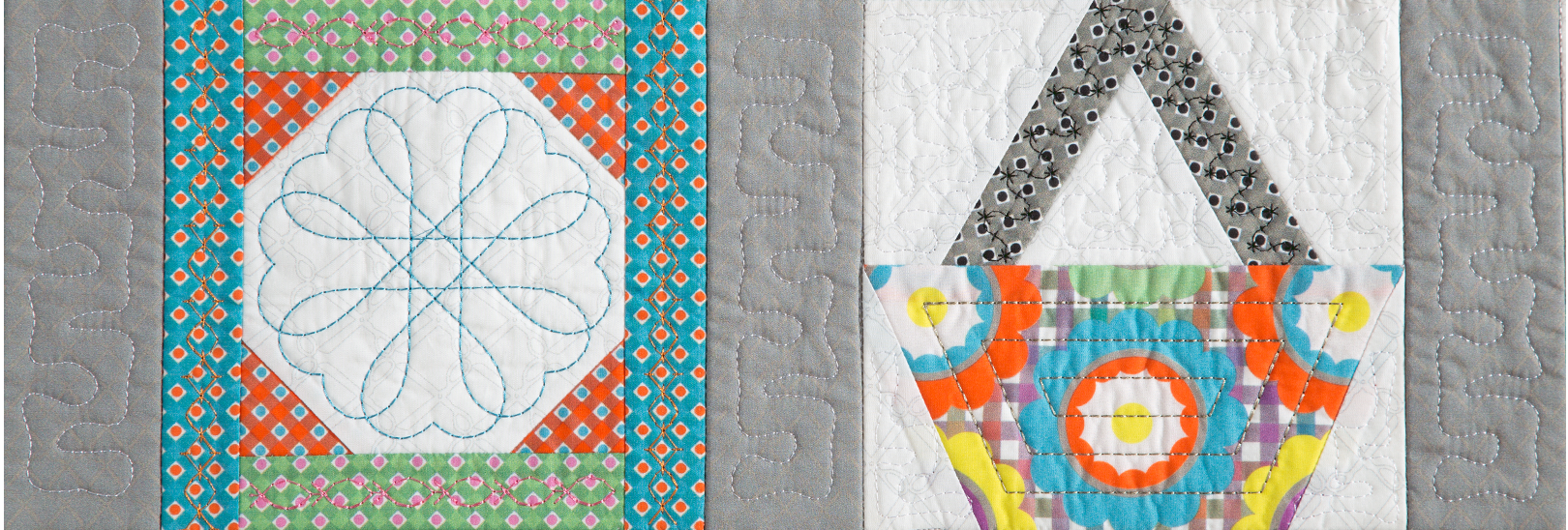My Block Piecer
Block of the Month : Block 3 Four Triangles
Sewing Instructions
Block 3 is our first two-unit block in the My Block Piecer Sampler Block of the Month. My Block Piecer splits some blocks into smaller units when a patch shares seam allowances with more than one patch. The 4-Triangle block consists of four half-square triangles. We’ll piece two units of two half-square triangles in the hoop. Then the units will be removed from the hoop and sewn together on the sewing machine with ¼” seam allowance.
Hoop tear-away stabilizer and stitch color 1, the placement guide of Unit 1.
Place patch 1 fabric, right side up, in patch 1. Stitch color 2, the tackdown.
Place patch 2 fabric, right side down, over patch 1, align the raw edges. Stitch color 3, the seam.
Flip patch 2 open and finger press the seam. Stitch color 4, the tackdown of patch 2.
Stitch color 5, the placement guide of Unit 2.
Place patch 3 fabric, right side up, over patch 3. Stitch color 6, the tackdown.
Place patch 4 fabric, right side down, over patch 3, align the raw edges. Stitch color 7, the seam.
Flip patch 4 open and finger press the seam. Stitch color 8, the tackdown of patch 4.
Remove the block from the machine and hoop. Trim the block on the outside stitch line.
Cut the stabilizer, separating the two units. Examine the block and make sure you cut the units between the raw edges, not the sewn seam.
Align the center seams of the two units and insert a pin horizontally into the ditch of the seam to keep it aligned.
For additional security, pin the units together.
Sew with ¼” seam allowance on the sewing machine.
You could opt to stitch the two units together in the hoop by loading the second design, Blk3Triangle_002.
If making the larger quilt, make three more blocks and set them aside.
It’s fun to play with different layouts but it might be wise to wait until all blocks are made to finalize the layouts.
Created by Nancy Stansbury
[/toggle]





















2 COMMENTS
Babillages
7 years agoI’ve seen Things with paint jobs like this before. Aside from being crazy glossy, I would warn any prospective buyer to check for a few areas in particular. #1 is always the rocker areas. This cars factory panel seams have been filled and painted over. Sometimes it’s just a decision to rid the car of them, which is fine, but understand that the paint will crack especially at the door pillar seams. These seams are here for a reason. #2: more often, the seams are filled because of rust repair. Check for filler from inside the passenger compartment, in the areas in front of the front doors, under the dashboard. People often put speakers here. Any filler in there means rust, improperly repaired. I have a car with this exact issue on one side. Moreover, I suspect this car has a LOT of paint on it, and not a great deal of prep work evidenced by the door catches and other hardware being painted, not removed. Fun car, just the same! Enjoy it!
MortarMark
7 years agoWhen used in leg openings, you will generally sew it straight onto the fabric, stretching it as you sew. For shoulder and waist seams, don’t stretch the elastic as you sew and sew it within the seam allowance.